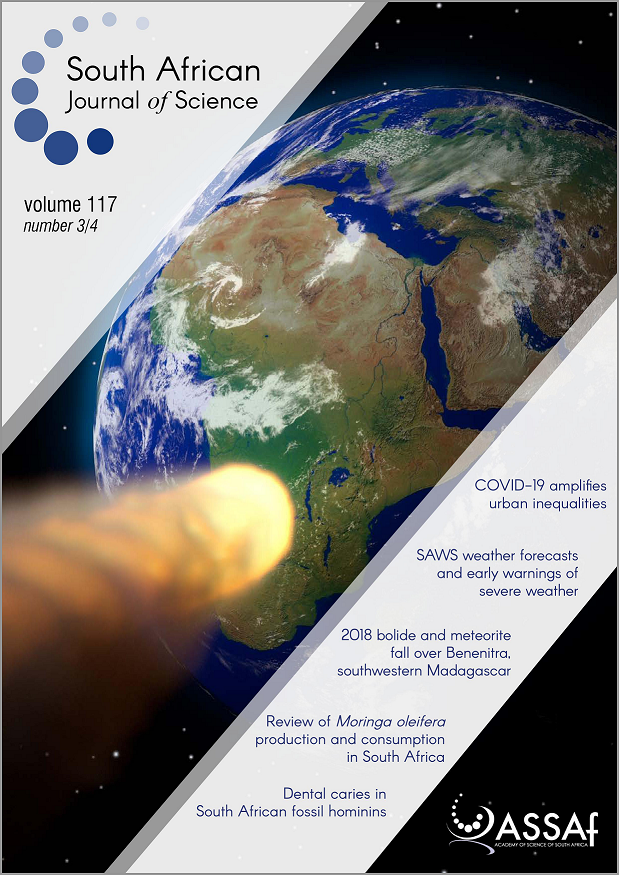Pleistocene reptile swim traces confirmed from South Africa’s Cape south coast
DOI:
https://doi.org/10.17159/sajs.2021/8830Keywords:
Pleistocene, reptiles, crocodylian swim traces, cemented foreshore deposits, trackmaker lengthAbstract
Large Pleistocene reptile tracks and traces were described from the Cape south coast of South Africa in 2020, including ‘probable swim traces’. These trace fossils were found on loose slabs and blocks of the Klein Brak Formation. Subsequently, another surface has become exposed on this coastline, also on a loose slab. It exhibits more definitive evidence of swim traces in epirelief, probably made by the Nile crocodile (Crocodylus niloticus) or water monitor (Varanus niloticus), although a chelonian origin cannot be excluded. Length of a possible crocodylian trackmaker was estimated from measurements of interdigital distance in the swim traces. These provide a compelling example of reptile swim traces from Africa.
Significance:
- Pleistocene reptile swim traces have now been confidently confirmed from the Cape south coast of South Africa.
- The findings complement the suite of recently identified large reptile tracks.
- Trackmaker size can be estimated from the dimensions of reptile swim traces.
- These are the first compelling non-dinosaurian reptile swim traces to be described from Africa.
Published
Issue
Section
License

All articles are published under a Creative Commons Attribution 4.0 International Licence
Copyright is retained by the authors. Readers are welcome to reproduce, share and adapt the content without permission provided the source is attributed.
Disclaimer: The publisher and editors accept no responsibility for statements made by the authors
How to Cite
- Abstract 1181
- PDF 469
- EPUB 152
- XML 168












.png)